-
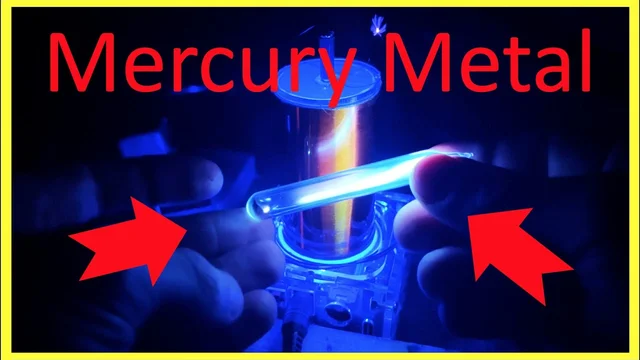 Picard of the Paris Observatory notices that dim light can appear in the vaccum space of a mercury barometer (Okamura 7)
Picard of the Paris Observatory notices that dim light can appear in the vaccum space of a mercury barometer (Okamura 7)
https://www.youtube.com/watch?v=61O6y2vZQ0U -
 The Leyden jar, a simple capacitor, is developed. Utilizing a glass jar, some water and foil, electricity could be stored for a short time (Dummer 1)
The Leyden jar, a simple capacitor, is developed. Utilizing a glass jar, some water and foil, electricity could be stored for a short time (Dummer 1) -
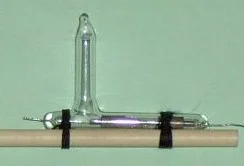 Serving as the first radio receiver or a "proto-transistor radio", the coherer is a vaccum tube filled with metallic powder, which could give high resistance in a weak electrical field and low resistance in a high one. (Dummer 98; Okamura 14)
Serving as the first radio receiver or a "proto-transistor radio", the coherer is a vaccum tube filled with metallic powder, which could give high resistance in a weak electrical field and low resistance in a high one. (Dummer 98; Okamura 14) -
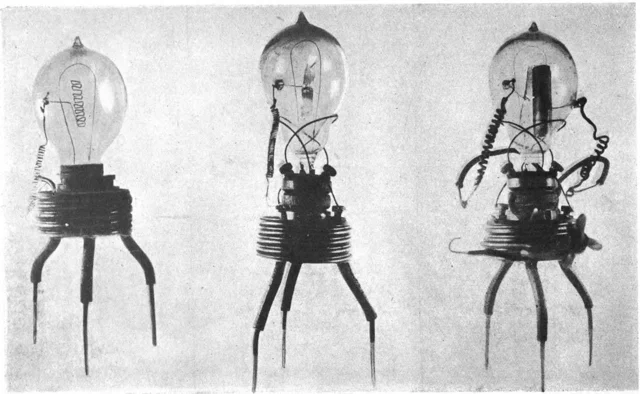 John Ambrose Fleming submits his patent for the first "vacuum tube". An alteration of the incandescent lightbulb which only permitted electrons to flow in a specific direction (Okamura 16).
John Ambrose Fleming submits his patent for the first "vacuum tube". An alteration of the incandescent lightbulb which only permitted electrons to flow in a specific direction (Okamura 16). -
Following the invention of the diode, more different types of diodes and vacuum tubes were created, jump-starting the industrialization of electronics and creating a foundation for telephone, radio and computer sciences (Dummer 7)
-
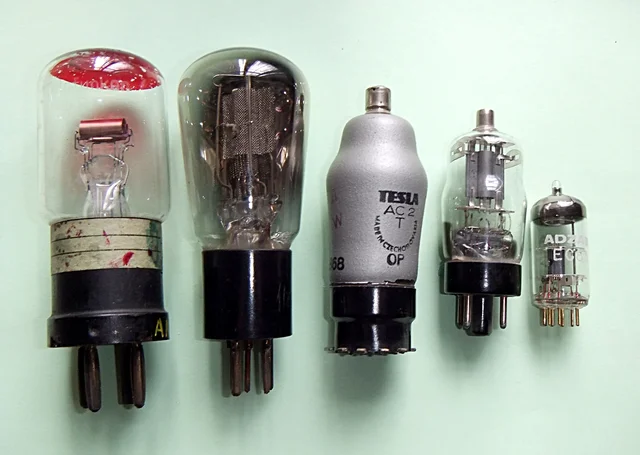 Lee De Forest files for a patent for his "triode" vacuum tube device. The triode had one more connection than the diode, and could function as an amplifier for weak electric currents. (Dummer 104)
Lee De Forest files for a patent for his "triode" vacuum tube device. The triode had one more connection than the diode, and could function as an amplifier for weak electric currents. (Dummer 104) -
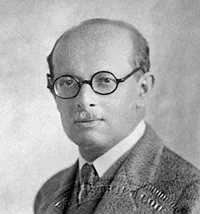 A patent was filed by Julius Lilienfeld of the University of Leipzig for a device that could be compared to today's advanced transistors. The transistor was reported to provide a means of obtaining amplification in a thin piece of copper. A working prototype was never built, and was forgotten by history. (Dummer 129)
A patent was filed by Julius Lilienfeld of the University of Leipzig for a device that could be compared to today's advanced transistors. The transistor was reported to provide a means of obtaining amplification in a thin piece of copper. A working prototype was never built, and was forgotten by history. (Dummer 129) -
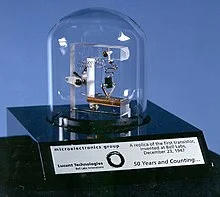 William Shockley, John Bardeen and Walter Brattain of AT&T's Bell Labs find out that by applying to gold contacts to a germanium, a signal is produced with output which exceeds the input, producing a point-contact transistor (Dummer 10.)
William Shockley, John Bardeen and Walter Brattain of AT&T's Bell Labs find out that by applying to gold contacts to a germanium, a signal is produced with output which exceeds the input, producing a point-contact transistor (Dummer 10.) -
Further research makes it possible to produce even smaller transistors, capable of handling smaller voltages in the 6-8v range. (Dummer 10)
-
Bell Labs produces a transistor which could be subtly altered with impure elements (doping) to produce different results (Millman)
-
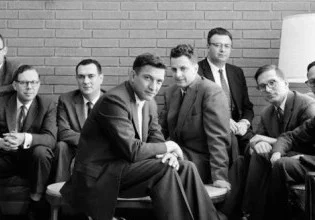 Jean Hoerni, of the Fairchild Semiconductor corporation creates the first planar transistor which could be used in an integrated circuit (Lojek) This is one of the first uses of silicon dioxide in the production of a circuit. http://semiconductormuseum.com/PhotoGallery/PhotoGallery_2N1613.htm
Jean Hoerni, of the Fairchild Semiconductor corporation creates the first planar transistor which could be used in an integrated circuit (Lojek) This is one of the first uses of silicon dioxide in the production of a circuit. http://semiconductormuseum.com/PhotoGallery/PhotoGallery_2N1613.htm -
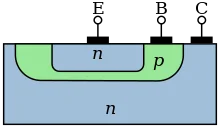 Planar processes were a process of integrating certain circuits with others, leading to efficient methods of producing entire sets of circuits, known as "integrated circuits" or ICs (Dummer 3.) This lead to the further miniaturization of electronics like the transistor.
Planar processes were a process of integrating certain circuits with others, leading to efficient methods of producing entire sets of circuits, known as "integrated circuits" or ICs (Dummer 3.) This lead to the further miniaturization of electronics like the transistor. -
The planar process lead to the creation of Integrated Circuits (ICs), doped with different impurities for different purposes. This process lead to widespread use and commercialization of computer technology, allowing computing devices to be small enough to fit in our pocket today. (Dummer 50)
-
MOSFET (Metal Oxide Semiconductor Field Effect Transistors) becomes the industry standard in the creation of integrated circuits. While they started out slightly slower than point-contact transistors, they were easier and cheaper to produce (Dummer 11).
-
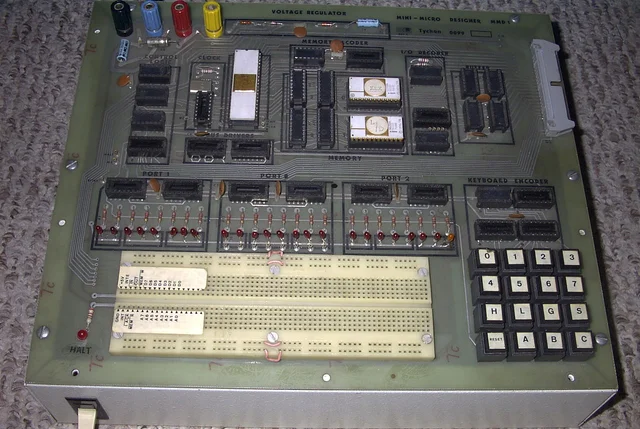 With the decreasing size of transistors thanks to the widespread use of planar process and integrated circuits, it made it possible for microprocessors the size of one's palm to be created. 1976 marks the date a true one-board computer is available to the public. https://www.worthpoint.com/worthopedia/vintage-1976-dyna-micro-mmd-computer-1870637602
With the decreasing size of transistors thanks to the widespread use of planar process and integrated circuits, it made it possible for microprocessors the size of one's palm to be created. 1976 marks the date a true one-board computer is available to the public. https://www.worthpoint.com/worthopedia/vintage-1976-dyna-micro-mmd-computer-1870637602